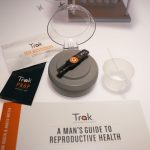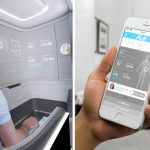A healthier, happier social presence: Tips for health care marketers in 2017
The health care industry has been slow to embrace social media, but contributor Rob Begg explains how that’s shifting and what hospitals and pharmaceutical companies can do to improve their social listening.

The health care industry may be at the cutting edge of medical science, but it has faced unique challenges in adopting social media. While airlines are fielding customer comments (and complaints) and restaurant chains are forging one-on-one relationships with guests, hospitals and pharmaceutical companies are both highly regulated and concerned (for good reason!) with customer trust.
That being said, there is some movement toward social, and it offers an exciting glimpse of what’s coming. For one, consumers will have personal and ongoing relationships with hospitals, which will, in turn, become online resources for their communities.
Social media will also become a valuable source of data for those companies that know how to listen to it. These industries are now finding innovative ways to not only reach their communities virtually, but to serve them there as well.
Beyond the bedside
Take a look at the Twitter feeds for Mercy Health System and the Mayo Clinic (plus its other handles, covering everything from sports medicine to neurology) and you’ll get a sense of what’s possible. Both create content and distribute it across social media, their own blogs and beyond.
Mercy has built a Twitter presence that disseminates information on everything from cauliflower rice to yoga for teens. Mayo does the same, but goes even further — posting its own interviews with its doctors and linking to news stories about its research.
Some pharmaceutical companies also try to reach specific audiences through social, as with the Lilly Diabetes feed. It offers personal stories, healthy-living tips and history. It positions itself as a resource without trying to deliver care.
There are two facets to this strategy. One is altruistic: becoming a thought leader by disseminating health care information to the populace. The other is practical: hospitals and drug companies have to build their brands, too.
Talking “brands” inevitably leads to a discussion of how providers have to shift their perceptions. It’s imperative to treat patients like customers; that experience determines whether or not they’ll come back.
Health care providers and pharmaceutical companies become trusted sources for public health information through content on blogs or Twitter, and by creating video content on YouTube that highlights valuable information for patients. The research and the subject-matter experts reflect back on those organizations.
It’s also about engagement: The experience of the “doctor’s visit” contains not just those moments when you’re sitting in that gown, but everything around it. You engage online to determine if you want to take your business to this or that hospital.
Remember, most of the potential patient’s time is spent outside of the hospital. From that perspective, reaching them in their regular lives is a necessity.
Hospitals that share expertise via social — public health information like flu outbreaks, for example — create a simple way to make themselves useful to customers.
The other way is to listen.
How to listen better
Both hospital systems and pharmaceutical companies can gather useful information from listening to patients on social. People talk a lot on social networks, so there’s a lot of nuance to this data: wait times, cleanliness, whether families have questions about care when they leave.
A lot of this goes unnoticed by the hospital itself, which after all has no customer service personnel on the premises. The front-line staff are those who are dealing with the patients, the medical professionals and clerical staff. For health care providers, social listening generates the feedback that goes unrecorded in the bustle of the hospital environment.
For pharmaceutical companies, it gets a little trickier. There was a time when regulations prevented social engagement. But social analytics now affords the chance to build communities of patients and conditions around real concerns.
And if you’re hearing about a certain illness and disease, that can inform what kind of content you’re going to create. If the conversations are more generalized, that might suggest a content or product gap that the company could fill.
In general, companies have found four uses for social listening:
- Monitoring brand health
- Tuning into conversations about issues that are important to patients
- Assisting in enrollment for trials
- Discovering patient communities
What’s next?
You’ll notice that what’s absent from these strategies is a significant piece of expertise: the doctors and researchers themselves. They’re the missing piece.
Mercy Health Systems, the Mayo Clinic and Lilly have demonstrated how to put their research on display, profile a doctor or get a story into the news. But those doctors and researchers aren’t themselves expanding the social conversation through their own participation. Whoever figures that out will create an impressive network for serving the public.
The other side of the coin is the patients — the customers — themselves. Discussing medical issues is still a sensitive, and often taboo, subject. But that’s changing, as generations weaned on social media begin to participate more in these growing networks.
More and better data leads to more and better interactions, products and, ultimately, a stronger, smarter health care system.
Some opinions expressed in this article may be those of a guest author and not necessarily Marketing Land. Staff authors are listed here.
Marketing Land – Internet Marketing News, Strategies & Tips
(62)














